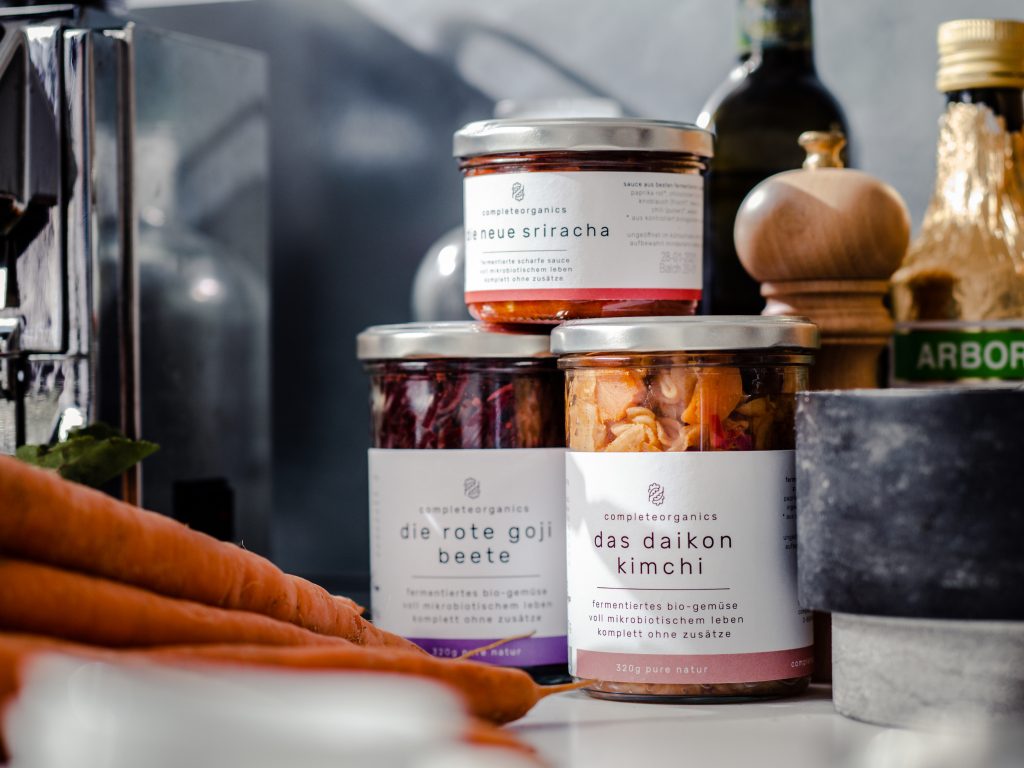Fermentation is one of the oldest and most important techniques when it comes to food production. Without it, we wouldn’t have bread, beer, yogurt, or wine, as well many other staples..
Now, fermentation is also becoming one of the most promising technologies for producing alternative proteins. The global market for fermented alternatives is expected to reach a value of $422.26 million by 2026 – and investors are taking note.
Formo, a precision-fermentation company from Berlin, just secured $50 million – the largest Series-A food-tech funding round in Europe to date. Meanwhile, Australia’s newest food-tech company, All G Foods, just raised $11.8 million to produce animal-free dairy.
The last edition of our Future Food Series, presented with the support of our friends at NX-food, explored the topic of fermentation. The webinar took place on 29 September – you can watch the recording – and featured speakers from Completeorganics, Kinoko Labs, Better Nature, and The Good Food Institute, all of whom shared insights on fermentation and their expectations from this promising technology.

Fermentation: an overview
There are three categories of fermentation that are used for producing alternative proteins: traditional or microbial fermentation, precision fermentation, and biomass fermentation.
Traditional fermentation is the one that most people are familiar with. Humans developed his technique centuries ago and it is the process that we still use to produce foods such as wine, beer, yogurt, tempeh, and sauerkraut. It involves adding starter cultures such as yeast or fungi to raw materials such as soya beans and cabbage. The microorganisms in the starter culture transform the raw materials biochemically (e.g. by developing nutrients) and organoleptically (e.g. taste, texture, etc).
This is what happens, for example, when producing tempeh, which usually uses cooked soya beans and a mould culture, although it can be also produced from other types of legumes as well as grains. During this process, the mould synthesises the enzymes, giving the resulting tempeh product a new flavour, texture, and aroma.
“We can leverage fermentation far more precisely, using microorganisms that we have developed for ourselves, to design our foods as we like them to be,” said Christopher Kong, Co-founder and CEO of the tempeh company Better Nature and one of the speakers at our webinar.

“In the near future, I envisage a world where fermented proteins will be mainstream. As it is perhaps the most powerful tool we have to feed 10 billion humans sustainably and nutritiously. No other technology has the capacity to scale up in the same way that fermentation can.”
Other plant-based products developed using this process are kimchi and sauerkraut, both of which are made from fermented cabbage.
Biomass and precision fermentation
With precision fermentation, you can programme microorganisms to produce complex organic molecules such as protein. According to a study by the Good Food Institute, it’s possible to use this process to make specific proteins, enzymes, flavour molecules, and pigments.
Alternative-protein producers, uncluding ProVeg alumni Formo and Remilk are already using this process. The resulting products are identical to animal-based ones. This is one of the reasons why this technology is attracting so much attention in the alt-protein sector. Dairy proteins, for instance, are increasingly in the precision-fermentation spotlight, while egg proteins are also starting to get attention.
Lastly, with biomass fermentation the microorganisms that are proliferating are themselves the key ingredient of the alternative protein. This could be fungi or algae, for example. These microbes have the ability to multiply quickly, increasing the amount of biomass available in a short period of time.
Kinoko Labs, Meati, and Mushlabs are just some of the startups that are working with fermented biomass in a bid to transform the alternative-protein arena.

“Fermentation is one pillar in the future of protein production,” says Isabella Iglesias-Musachio, Founder of Kinoko Labs. “It does not require extensive arable land for its production, thereby reducing water and energy consumption.”
A lot of information, right? Well, this is just the tip of the iceberg in terms of what this technology can offer us.
How will fermentation impact our future food system?
Dr Jeremy Chignell, the Good Food Institute’s fermentation specialist, who will also be speaking at our webinar, expects that “in the near term”, fermented products are likely to be more expensive than plant-based products. However, he says that they can compete on terms other than price.
“Products made via the process of fermentation will likely be more directly comparable to animal-based products. Mainly from a taste perspective, which is a huge plus point. When removing animals from the production process without sacrificing taste, it leads to enourmous ecological benefits”
Will fermented products be successful with consumers?
“Fermentation-based products, such as casein, whey, and fats, are indistinguishable from animal-based products,” says Jeremy. “That means they could potentially advertise that they are in fact “real” cheese, compared with plant-based products. Companies can advertise a product as “cheese without the cow” or “egg without the chicken” and would be more likely for consumers to accept, on the basis of familiarity, than a plant-based analogue would”.
There are also the unique health benefits of fermented foods to consider. Jeremy says that companies using precision fermentation “will be able to offer a full suite of designer foods that can be tailored to particular health applications”. This may include, for example, omega-3 fatty acids, bioactive peptides, complete proteins, functional proteins, and micronutrients.
Jeremy advises that fermentation companies “should be attentive to the target market”. “The use of GMO microorganisms is not common for traditional or biomass applications. But precision fermentation almost exclusively uses engineered microorganisms to produce targeted proteins of interest. Fermentation-derived products from GMO organisms may struggle to compete in some markets with organic, non-GMO plant-based products”, he says.
If you’d like to learn more about the topic of fermentation, take a look at the event’s recording!

